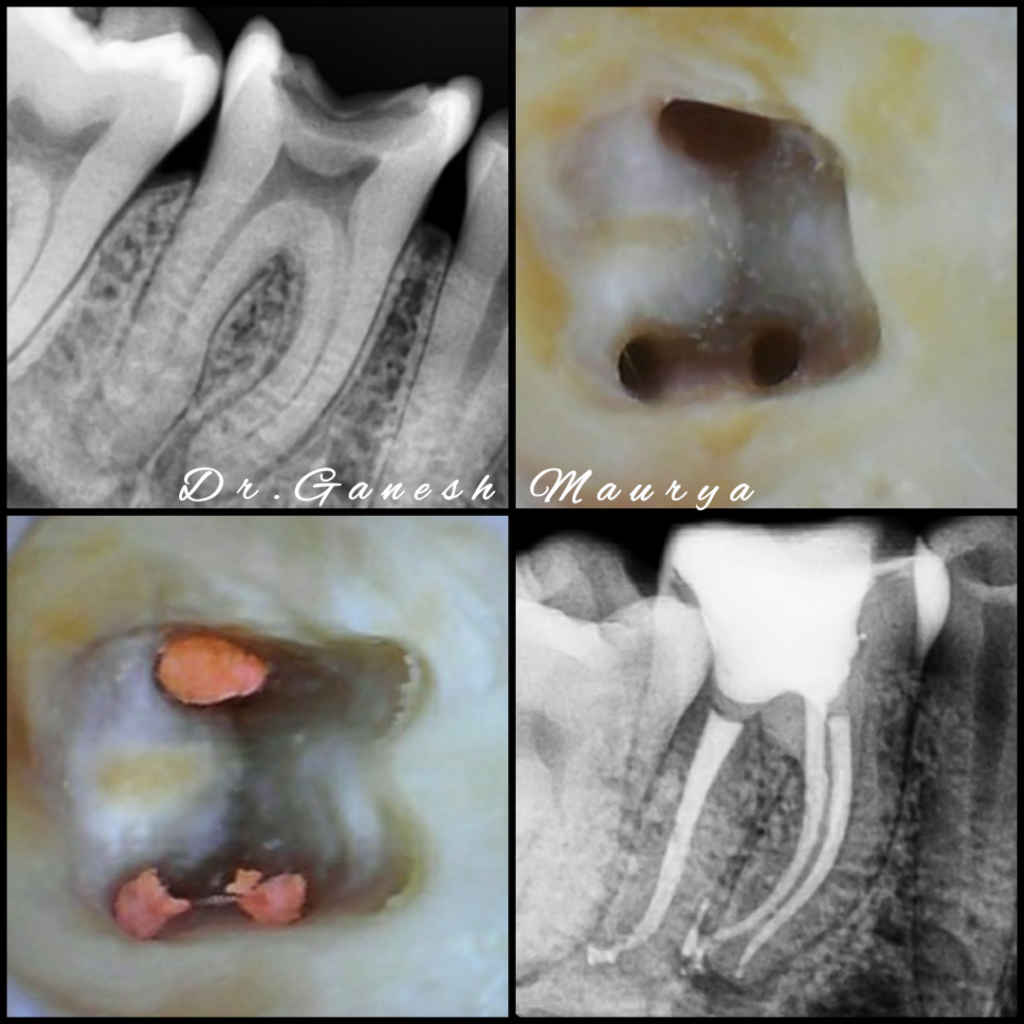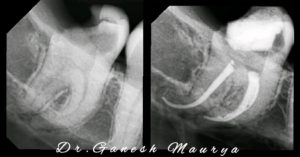Shaping Sequence A Dilemma for Dentist:-
Have received many queries from dental colleagues & students asking – What file sequence they need to follow during shaping procedure of Root Canal Treatment .With almost 10 years into practice , I will share the shaping sequence that I follow so as to minimize file separation during procedure.First of all; have a good look at the Pre-Op X-ray and categorize your case into either of 2 categories.
1) Normal / Straight canals
2) Curved / Calcified canals
For Normal/ Straight canals, the file sequence will be-
#8 K file
#10 K file
#15 K file & then (Rotary Files)
#Orifice opener
#20 04
#25 04
#30 04
For Curved / Calcified canals, the file sequence will be-
#8 K file
#10 K file
#12 K file
#15 K file& then (Rotary Files)
#Orifice Opener
#15 04
#20 04
#25 04
Few important points I would like to mention-
1) Proceed for the next step only after #15 K hand file reaches till the Working Length; smoothly & without any resistance.
2) Use orifice openers to flatten out the dentinal triangle & flare up the coronal 3rd of the canal before inserting rotary files. For beginners, its preferable to use hand orifice openers rather than rotary orifice openers.
3) The golden rule is that; whenever rotary file tip is in the apical 3rd, it should be free in the coronal 3rd. The torsional stress acting in the file is highly reduced and hence less chances of file separation.
4) Last, but not the least. Always remember that tackling curved canals is always a manual game. The more time we spend with our hand files, the easier it will be for rotary files to follow the curvature. Keep the jump in the file sequence as minimum as possible. Hence the hand filing sequence too is suggested to be #8, #10, #12, & #15. Also, with increase in the rotary file size, the stiffness of the file increases and the cyclic fatigue acting in the file also increases. Hence it’s always safe to limit the final preparation size of curved canals till 25 04 size.And thinking logically ; its easier for a small car (25 04) to take a 90 degree turn as compared to a truck (35 04). While driving a car we slow down a bit when we come across a sharp turn. Similarly; we need to follow a more gradual canal preparation while dealing with curvatures .
5) Always look for reasons to discard rotary files. Shiny spots, unwinding of flutes, or any signs of wear, or done with 6-8 cases; these are these are good enough reasons to discard file. It’s always wise to discard the file into the bin rather than into the patient’s tooth.
(Clinical Cases shaped using M Access hand files (Dentsply), NT Gold rotary files (Nineten)


AUTHOR

